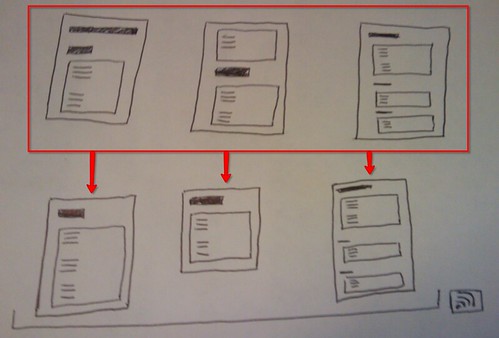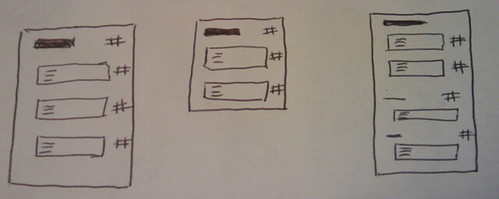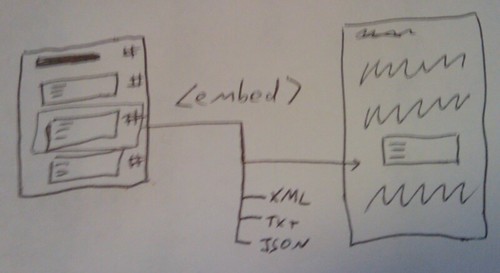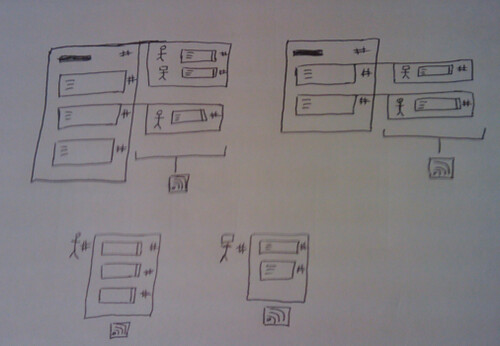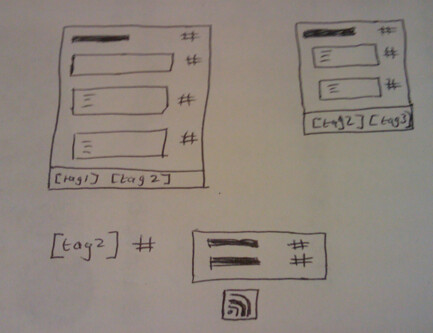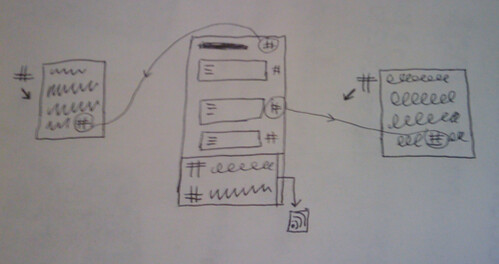As we come to the final month of the JISCPress project, we had some great news over on WriteToReply last week where we were able to announce that Eduserv would be covering our hosting costs for the immediate future (Eduserv funds hosting for WriteToReply, eFoundations: Write To Reply).
So what exactly does the platform we’ve been working on have to offer? Here’s one of the ways I think of it…
A document publishing platform that automatically atomises documents to the paragraph level, allows aggregated commenting at the paragraph and ‘user’ level, and supports the republication and re-presentation of documents in a variety of standard formats at the document level.
The first part of the process is the (manual assisted) ingress stage, in which documents are imported into the WordPress environment such that each substantive document section ideally maps onto a single WordPress “blog post”:
An RSS for the document as a whole, with one item per section, is generated automatically by the WordPress platform. A single item RSS feed is also generated for each page (so the content of each page can be easily transported around the web).
The second part of the process is the atomisation of each post, carried out automatically by the Digress.It theme, in which each paragraph in the document is given its own unique URI, derived from the URI of the web page (“blog post”) the paragraph appears on:
Potentially, an RSS feed can also be produced for each page in which each paragraph is a separate feed item, thus allowing a page/section to be transported around the web via a single feed, but in atomised form.
The paragraph level chunks produced by the atomistation process can be transcluded as independent elements in independent web documents in other documents by a variety of means (as an embeddable object, via XML, txt, JSON, etc):
The default nature of the WordPress platform allows comments to be made at the level of each web page, with an RSS feed of comments for each page being published ‘for free’. JISCPress extends this functionality by allowing comments to be associated with discrete paragraphs. Views over the comments are also available at the user level, (that is, grouped according to the user who made the comments, wheresoever they are made in the document). An additional RSS fed of comments by user is also available, which means that a document on the platform can actually be used as a scaffold for a critical response to the document by a particular user.
A further level of innovation is based on the automated generation of ‘semantic tags’ at the page level. Once generated, tag based collections of posts can be syndicated in the normal way via WordPress generated tag based RSS feeds:
JISCPress also benefits from the Trackback mechanism implemented by WordPress. When a page or paragraph URI is linked to from a third party web page, a trackback to the originating page may be captured, which we interpret as the automated capture of links remote annotations or comments about the document.
When considered in these terms, the JISCPress/WriteToReply platform is seen to provide a powerful means of publishing documents in which individual sections may carry their own unique URI, and individual paragraphs within a section also contain their own unique URI (which in many situations may be rooted on the section URI).
The platform can also be regarded as republishing – or re-presenting – each section (i.e. page) and each paragraph as an independent entity. That is, whenever a document is published via the platform, each separate paragraph may also be thought of as being independently published “for free”, in the sense that:
– each paragraph is independently addressable,
– each paragraph is independently commentable, and
– each paragraph is independently republishable/syndicatable.
So, given that, can you think of any ways in which the JISCPress/WriteToReply platform can support your document publishing and comment gathering strategy?
